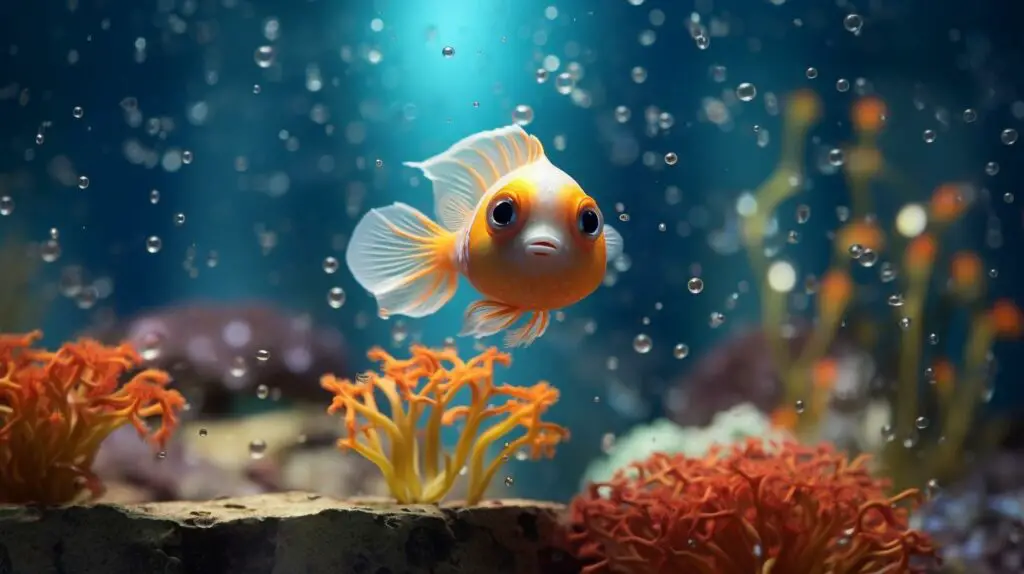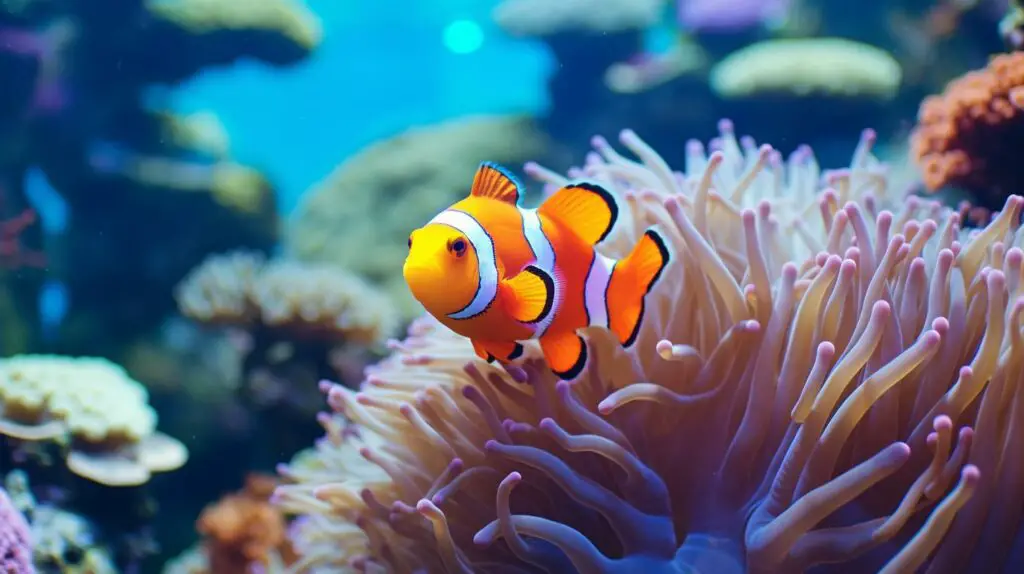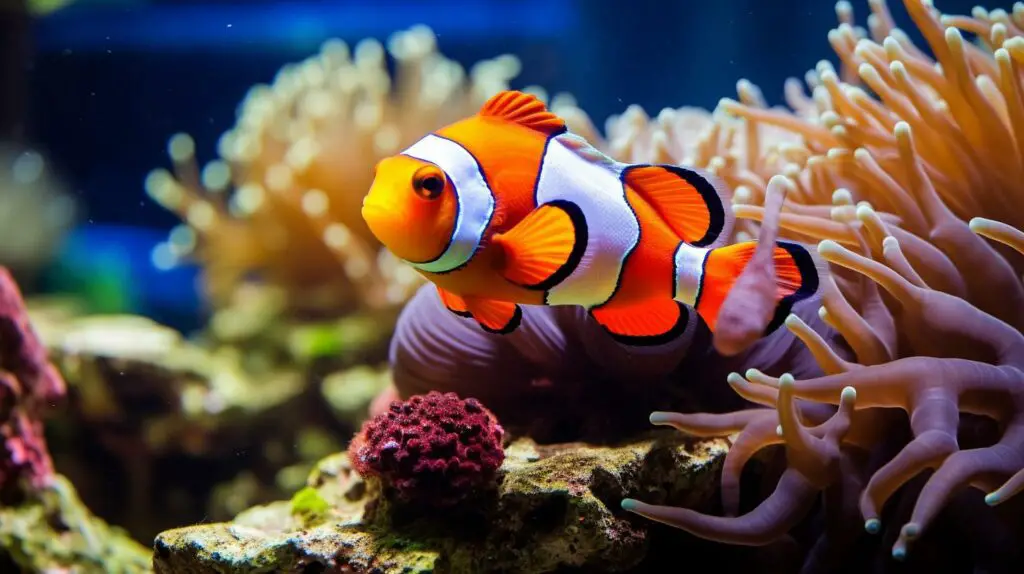When you see your favorite pet fish swimming in the tank, have you ever wondered if it has emotions? Does it cry when sad or depressed? If so, you are not alone. There has been a big question mark on this topic for decades. Indeed there has been a huge debate among scientists about fish emotions and the capacity to cry. So can fish cry? Do they have tears or emotions? Let’s explore.
In humans and other mammals’ brains, there is a section of the cranial nerve called the cerebral cortex that produces tears. But fish brains don’t have this part. So they can’t produce tears or cry. But it doesn’t mean they don’t have any emotions. They are capable of feeling all emotions, including happiness, excitement, sadness, stress, and depression.
In the rest of the article, I’ve broken down the science of fish’s emotions and tears. If you are curious about the general behavior of fish and want to know some amazing facts about underwater creatures, then stay tuned till the end.
Do Fish Have Emotions?
We only think about fish when there’s a crunchy fish item in our lunch. But when you have a bite of that fish, have you ever thought that this little creature might have emotions like us? No, right? You must be wondering how such a tiny brain of a fish can have such a rich and complex mental landscape to experience emotions.
Wait, stop judging a fish by its brain size.
In a recent study by Jonathan Balcombe, he presented evidence of fish having conscious awareness or sentience. It allows fish to experience pain, recognize individual humans, and have memory.
Scientists from the Institution of Agriculture have found that fish emotions are so strong that they can even affect their health, just like humans. They conducted an experiment on zebrafish where they separated some fish from their desired mates, and guess what? Some fish had emotional fevers.

Now let’s move to pet fish to get real proof that fish have emotions.
If you are a fish keeper, then you must be familiar with fish emotions by now. When your fish are healthy and happy, you will find them playing all over the tank. You must have noticed the excitement and happiness when you feed them.
The opposite scenario will be shown when there’s something wrong with the water parameters or any disease in the tank. Your fish would express their sadness and stress by sitting idly or swimming in unusual patterns. Sometimes fish hide to escape from predators. It’s their expression of fear.
See, fish have all the emotions that we possess. Their behavior and brain structure prove that they have emotions. But so far, scientists could not invent any way or device to measure the intensity of their emotions.
Read Also: Do Fish Have Brains?
Do Fish Have Tears? Can Fish Cry?
Now we are clear about fish emotions.
But at this point, some questions arise. For instance, how do fish express their emotions when they are sad? Do fish have tears like us? Can fish cry?
See, tears are a complex mixture of proteins, salts, hormones, and other substances. We normally take tears as a way of expressing our emotions. But the effectiveness of tears doesn’t end here. Tears protect and moisturize our eyes by keeping the surface of our eyes lubricated.
But when it’s about fish, tears are totally unnecessary and impractical because fish always stays in the water. Their eyes are always moist. On top of that, fish don’t have a cerebral cortex in their nervous system. It is the main part that produces tears.

So the simple answer is that fish can’t cry as they can’t produce tears. But there’s no need to lower or underestimate the emotional intensity of fish. It’s just that they express their feelings through behaviors rather than tears.
Read Also: Do Fish Like Toys?
If Fish Can’t Cry, How Do They Express Their Sadness?
As fish doesn’t have the biological machinery or cerebral cortex to produce tears, they express their sadness, depression, and pain through their behavior. Some fish swims in unusual or odd patterns, while some separate themselves from the group just like we lock our room and stay alone when we are sad or depressed.
Sometimes they even rub their body on nearby rocks or hard substances. During sad moods or stress, some fish have been seen to lie at the bottom of the tank.
If you notice this kind of behavior in your fish tank, it is certain that your fish are stressed or sad. In such cases, you should immediately check all the water parameters and make sure everything is ok.
But there’s a fish species that can make loud noises like crying when they are sad or depressed. The Three-Spined Toadfish have been seen to do so.

Till now, scientists haven’t found any other fish that have this ability. And when people first heard these sounds, they assumed that the male Toadfish were making such noises to impress the female. But scientists did not stop researching it, taking that assumption as fact.
Some recent studies have revealed that both male and female Three-Spined Toadfish can make crying like loud noise. They do it to draw the attention of their desired mate, to scare other predators, and mostly to express their sadness or depression.
How Do Fish Communicate Their Emotional State?
Fish communicate their emotional states through physical changes and social responses. However, interpreting these signals accurately requires an understanding of their natural behavior and responses to different stimuli.
Physical Changes (e.g., color, behavior)
Fish can change their color and behavior in response to different emotional states. For instance, some fish species darken their color when they are stressed or scared. Others might exhibit changes in their swimming patterns or display aggressive behaviors.
Social Responses (e.g., aggression, schooling)
Social behavior in fish can also be a sign of their emotional state. For instance, increased aggression could indicate stress or fear, while changes in schooling behavior might suggest a response to an external threat or stressor.
Do Fish Have a Tear Production Mechanism Like Humans?
One key question in understanding whether fish can cry is to explore if they have a tear production mechanism like humans. The answer to this requires a look at the anatomy of a fish’s eye.
Unlike humans, fish live in water, which keeps their eyes moist all the time. Therefore, fish do not need a tear production and drainage system like terrestrial animals to keep their eyes lubricated.
Even though fish do not have tear glands like humans, some marine creatures produce a substance similar to tears. For instance, sea turtles have been observed “crying,” but this is actually a way for them to expel excess salt from their bodies. However, no such mechanism has been observed in fish.
Can Fish Feel Pain?
The debate on whether fish can feel pain has been ongoing for several decades. To understand this issue better, it’s necessary to look at the fish nervous system and its capacity for pain reception.
Fish possess a nervous system that allows them to respond to harmful stimuli. They have nociceptors, nerve receptors that respond to potentially harmful stimuli, much like those found in humans and other animals.
Many studies suggest that fish react to injurious stimuli. For example, a research article published in the journal “Applied Animal Behaviour Science” reported that fish show changes in behavior when exposed to potentially harmful conditions, such as extreme temperatures or chemical irritants.
How Do We Interpret Fish Emotions Without Anthropomorphizing?
While it’s clear that fish can exhibit responses to emotional stimuli, it’s important to be careful not to anthropomorphize fish emotions based on our understanding of human emotions.
Attributing human emotions to fish can lead to incorrect assumptions and interpretations about their behavior. Fish do not have the same brain structures as humans, and thus their emotional experiences may be fundamentally different from ours.
Scientists rely on careful observation and controlled experiments to understand fish emotions. By studying their behavior in different contexts and conditions, researchers can gain insights into how fish might experience their world.
How Does Understanding Fish Emotions and Responses Benefit Us?
Understanding fish emotions and responses can have practical implications for various human activities and interests, from fish farming to conservation efforts.
The better we understand fish behavior and emotions, the better we can ensure their welfare in captivity and work towards their conservation in the wild. This knowledge can help us create environments that cater to their natural behaviors and emotional needs.
A better understanding of fish emotions can also influence practices in the fishing industry and among recreational anglers. For example, if fish feel pain, this might suggest a need for more humane fishing methods.
Wrap Up
Fish can’t cry because they don’t have a cerebral cortex to produce tears. Besides, the main function of tears is to keep the surface of our eyes lubricated or moist. But in the case of fish, they always stay in the water. So tears are unnecessary for them as their eyes are already lubricated all the time.
As they can’t express their sadness and pain through crying, they do it through their attitude. But there’s a fish called the Three-Spined Toadfish which can make loud noises like crying when they are in pain or in a bad mood.
However, they can feel all the emotions, including happiness, excitement, sadness, depression, and fear.

